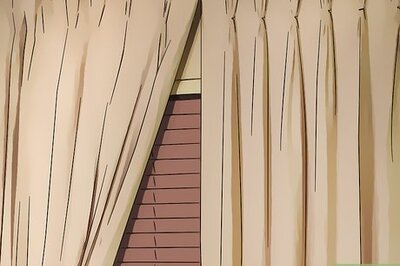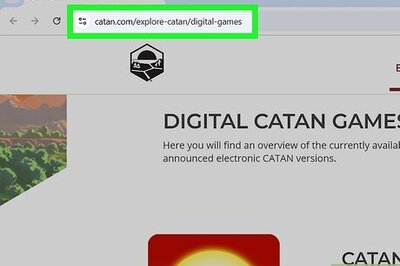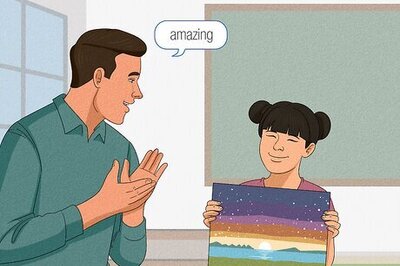
views
New Delhi: Under the grand marquee, the invitees listened in with rapt attention. The top leaders on the stage were face-to-face with national council members one last time before the poll bugle is sounded in the next two months. Banners and posters urged cadres to work for 'fir ek Baar, Modi Sarkar'.
Rewind to 2014. At the same, at Ramlila Maidaan in the national capital, the then BJP Prime Minister candidate Narendra Modi addressed the council members. For the leaders who opposed him from within and his adversaries outside he had a succinct message:
“Aap chalen na chalen, desh chal chuka hai”.
On Saturday afternoon, the PM told the cadres against the pitfalls of complacency in the face of the electoral battle – a second term for Atalji, he told them, would have prevented the policy paralysis for 10 years in the UPA era.
In the process, the Prime Minister made a strong pitch for a second term.
The politician in Modi - like many of his ilk - has this ability to get the public pulse right to the last beat. More than that, he has since his CM days been successful in setting the agenda and forcing his adversaries to bat on a pitch of his choice.
As chief minister of Gujarat, Modi made state elections a contest between him and the Congress central leadership. The ‘Delhi Sultanate’ as he called it. In 2014, he sought a mandate to bring back ‘ache din’ after a decade of policy paralysis.
In his speech to the cadre at the council on Saturday, Prime Minister again challenged the Gandhi family. He once again raked up the National Herald case.
In 2019, 60 years of Congress ‘mis-rule’ would be one of the talking points that BJP leaders from top to grass roots would use to attack the opposition.
Party president Amit Shah, in his inaugural address, compared the upcoming polls to the battle of Panipat between the Mughals and the Marathas. But beyond that, the BJP in Lok Sabha polls will also have to talk about its performance after being handed a clear mandate to govern for full five years.
Seeking a second term, Modi this year would be defending a good first innings total of 273 plus. He registered a near cent percent strike rate in states where BJP matters - in the north, west and central India.
In the last five years, the party has attempted to strengthen its position in other areas as well. We have heard of the ‘Look East’ policy to erase deficit elsewhere. Sorties to the Coromandal states have not yielded much. Prime Minister has given another call to potential and current allies.
In running its first full majority government at the centre, BJP has also sought to invest in new social blocks for electoral gains. Three decisions by the Prime Minister in this regard need special mention- Demonetisation, GST and nomination of Ramnath Kovind as President of the Republic.
The first two were economic measures with a prominent political overtone. For once, BJP was attempting to pole vault from one side of the social divide to the other. From being seen as a party of the urban and upper caste to one with an egalitarian outlook.
Kovind’s appointment as the President of India was another political outreach towards the dalits. Universal Basic income of people living below poverty line is reportedly in the offing.
Ahead of the elections now, BJP seems to be making calibrated changes in its poll strategy - 10% reservations to the economically weaker sections has been promised. Caste, however, in not BJP’s pitch. They have taken the gambit to reach out to the upper castes this time.
A little here and there, the discourse can spiral out to assume quota vs anti-quota narrative.
Which is why the prime minister in his address took time to explain that reservation for economically weaker sections would not impinge on caste reservations.
The provisions of EWS reservation, Prime Minister said, will not snatch away rights of those already availing benefits of caste quota.
“Some people are trying to spread rumours. Capacity of educational institutions will be increased by 10%,” the Prime Minister assured.
Coming back to the core issues, the RSS has made it clear - it wants a Ram temple in Ayodhya, by ordinance or otherwise. The PM has ruled out an ordinance route, and said the BJP would wait for the judicial process to get over.
In 2014, BJP's message to the electorate was clear and condensed. The party offered hope and people latched on to it.
In 2019, Prime Minister offered a choice to the people. A choice between majboot and majboor Sarkar.




















Comments
0 comment